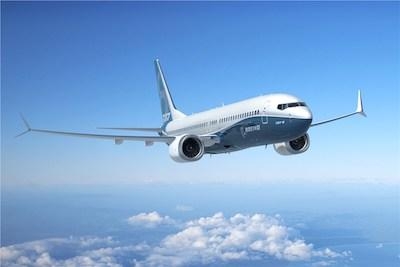Acting Administrator Elwell Addresses Global Regulators Meeting
Acting FAA Administrator Daniel Elwell told a recent meeting of global aviation regulators that it is waiting for Boeing to complete its update of software for the MCAS used on the 737 MAX airplanes, and that several things need to happen before the U.S. regulator will return the airplane to service.

In his closing remarks to the assembled regulators, Elwell said the meeting had been "both comprehensive and constructive. While the tragic circumstances that brought all of us together might be considered extraordinary—there is nothing extraordinary about the level of commitment to safety shared by all of us. Our sense of mission—that makes aviation the safest form of transportation—runs strong and deep, and binds all of us. If not in one meeting in Ft. Worth, we are comparing notes in symposiums around the world, we’re in web-based conferences, or we simply pick up the phone."
The subjects covered at the meeting included:
- How the FAA responded to the MAX accidents and how we’re supporting the two international accident investigations.
- How we plan to certify Boeing’s MCAS changes and how we’ve been sharing information with all the regulators here.
- The latest status on the Technical Advisory Board, or TAB, which is reviewing Boeing’s MCAS software update and system safety assessment. As you know, the TAB is tasked with identifying any issues where further investigation is recommended before we approve the MCAS design change.
- Details of the Boeing’s proposed changes to the MAX – both to the flight control system and pilot training
- A review of the technical steps and sequence of events that we anticipate would be involved in ungrounding the MAX fleet here in the United States.
- A discussion of international considerations for returning the MAX to service outside the United States.
"

What happens next is that, here in the U.S., we await Boeing’s completed for changes to the MAX. Once received we perform our final risk assessments and analyses, taking into account findings of the TAB and any information we receive from our international counterparts. We’ll also take part in test flights of a modified 737 MAX and weigh all the information together before making the decision to return the aircraft to service," Elwell (pictured) said.
"Internationally, each country has to make its own decisions, but the FAA will make available to our counterparts all that we have learned, all that we have done, and all of our assistance under our International Civil Aviation Organization commitments.
"As all of us work through this rigorous process, we will continue to be transparent and exchange all that we know and all that we do – to strengthen the public’s confidence that the aircraft will meet the highest safety standards."
In a statement released following the meeting, Boeing said the company "appreciate(s) the FAA's leadership in taking this important step in bringing global regulators together to share information and discuss the safe return to service of the 737 MAX. Our team, our airline customers, and regulators place the highest priority on the safety of the flying public. Once we have addressed the information requests from the FAA, we will be ready to schedule a certification test flight and submit final certification documentation."
(Source: FAA and Boeing news releases. Images from file)
 NTSB Final Report: Rutan Long-EZ
NTSB Final Report: Rutan Long-EZ ANN FAQ: Turn On Post Notifications
ANN FAQ: Turn On Post Notifications Classic Aero-TV: ICAS Perspectives - Advice for New Air Show Performers
Classic Aero-TV: ICAS Perspectives - Advice for New Air Show Performers ANN's Daily Aero-Linx (06.28.25)
ANN's Daily Aero-Linx (06.28.25) Aero-News: Quote of the Day (06.28.25)
Aero-News: Quote of the Day (06.28.25)




